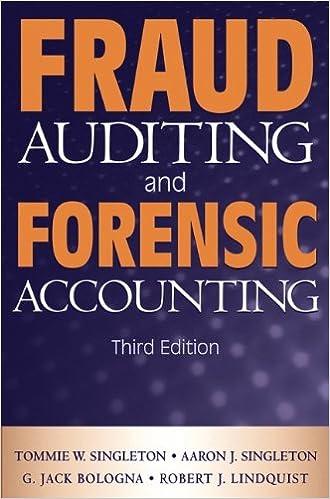Question
Problem 13-2A The comparative statements of Osborne Company are presented here. OSBORNE COMPANY Income Statements For the Years Ended December 31 2014 2013 Net sales
Problem 13-2A
The comparative statements of Osborne Company are presented here.
| OSBORNE COMPANY Income Statements For the Years Ended December 31 | ||||
| 2014 | 2013 | |||
| Net sales | $1,895,999 | $1,755,959 | ||
| Cost of goods sold | 1,063,999 | 1,011,459 | ||
| Gross profit | 832,000 | 744,500 | ||
| Selling and administrative expenses | 505,459 | 484,459 | ||
| Income from operations | 326,541 | 260,041 | ||
| Other expenses and losses | ||||
| Interest expense | 23,583 | 21,583 | ||
| Income before income taxes | 302,958 | 238,458 | ||
| Income tax expense | 93,583 | 74,583 | ||
| Net income | $ 209,375 | $ 163,875 | ||
| OSBORNE COMPANY Balance Sheets December 31 | ||||
| Assets | 2014 | 2013 | ||
| Current assets | ||||
| Cash | $ 60,100 | $ 64,200 | ||
| Debt investments (short-term) | 74,000 | 50,000 | ||
| Accounts receivable | 123,259 | 108,259 | ||
| Inventory | 127,583 | 117,083 | ||
| Total current assets | 384,942 | 339,542 | ||
| Plant assets (net) | 663,905 | 535,205 | ||
| Total assets | $1,048,847 | $874,747 | ||
| Liabilities and Stockholders Equity | ||||
| Current liabilities | ||||
| Accounts payable | $ 165,459 | $150,859 | ||
| Income taxes payable | 45,083 | 43,583 | ||
| Total current liabilities | 210,542 | 194,442 | ||
| Bonds payable | 234,905 | 214,905 | ||
| Total liabilities | 445,447 | 409,347 | ||
| Stockholders equity | ||||
| Common stock ($5 par) | 290,000 | 300,000 | ||
| Retained earnings | 313,400 | 165,400 | ||
| Total stockholders equity | 603,400 | 465,400 | ||
| Total liabilities and stockholders equity | $1,048,847 | $874,747 | ||
All sales were on account. Net cash provided by operating activities for 2014 was $235,290. Capital expenditures were $136,100, and cash dividends were $61,375. Compute the following ratios for 2014. (Round all answers to 2 decimal places, e.g. 1.83 or 12.61%.)
| (a) | Earnings per share | $ | |||
| (b) | Return on common stockholders equity | % | |||
| (c) | Return on assets | % | |||
| (d) | Current ratio | :1 | |||
| (e) | Accounts receivable turnover | times | |||
| (f) | Average collection period | days | |||
| (g) | Inventory turnover | times | |||
| (h) | Days in inventory | days | |||
| (i) | Times interest earned | times | |||
| (j) | Asset turnover | times | |||
| (k) | Debt to assets | % | |||
| (l) | Current cash debt coverage | times | |||
| (m) | Cash debt coverage | times | |||
| (n) | Free cash flow | $ |
Step by Step Solution
There are 3 Steps involved in it
Step: 1

Get Instant Access to Expert-Tailored Solutions
See step-by-step solutions with expert insights and AI powered tools for academic success
Step: 2

Step: 3

Ace Your Homework with AI
Get the answers you need in no time with our AI-driven, step-by-step assistance
Get Started


